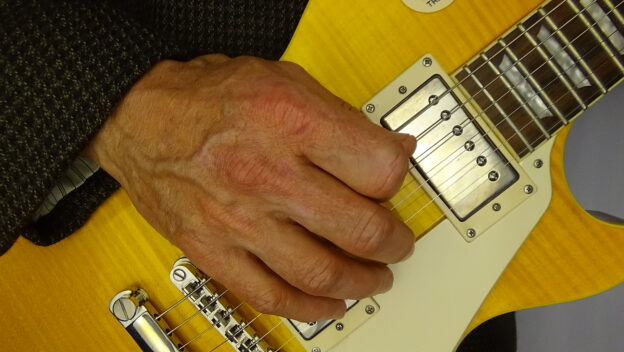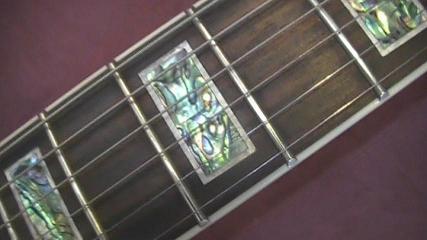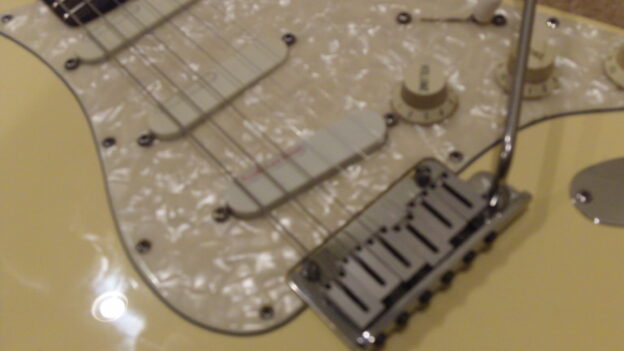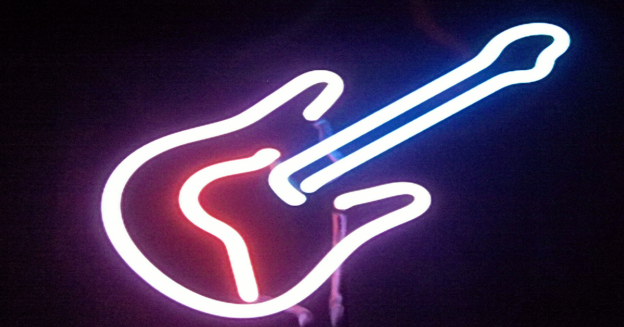By Chad Crawford, PMI Guitar Instructor
After a couple of decades of teaching guitar and interacting with other teachers and many clients, I can make a number of predictions on what any aspiring guitarist will struggle with and how the various responses to these stumbling blocks will either help or hinder progress. The guitar is a challenging instrument, and there are any number of areas where one might encounter a temporary roadblock. Of these typical areas, there is one that stands out above all others as the number one barrier to progress: not following the instructions.
Allow me to clarify this concept since the phrase alone may seem too broad and actually contrary to your experience. I doubt you have ever openly refused to learn a particular chord, for example, or a basic scale pattern. This is not the sort of thing I mean when I suggest that a significant percentage of guitar students often stumble in implementing course recommendations. It is not a matter of people intentionally side-stepping the instructions. Rather it is that certain aspects of optimum physical technique run contrary to our instincts. Most students tackling a challenge in physical technique tend to unconsciously default back to instincts rather than consistently apply good technique recommendations. I am guilty of this as much as anyone, although I have improved significantly over the years in applying what the guitarist community has found to be the most effective technique development methods.
Now let me narrow this down to the specific items that I see over and over. If any of these seem to apply to you, keep in mind that I am not writing about any specific person or experience, but rather my collective experience as a guitar student and teacher. Although some of these may apply to you, they are universal themes in the guitar community, so don’t feel like I’m singling you out for a hard time!
- Tickle the strings rather than tackle them.
- For playing chord rhythms, use a wide, fast, and light-contact pick stroke.
- For playing individual notes or two-string intervals (fifth chords, double stops) keep the pick hand palm turned into the guitar so that the pick moves parallel to the plane of the strings with a mere flick of the wrist.
- Apply no more pressure to the strings/frets than necessary to sound out a clear note.
- Avoid grasping the guitar neck with the palm and thumb as if it were a baseball bat.
- Use your elbow to change the working range of your pick – not your wrist or your shoulder.
- When changing to an upcoming chord, avoid chopping off the last beat of the previous chord by releasing pressure too early.
- Unless you are practicing specifically to develop speed, do not practice at a tempo faster than you can play with good note articulation and two-hand synchronization.
- When learning a new rhythm pattern, strum slowly and consciously count the beats and divisions of the beats, rather than trying to play the rhythm by “feel”. Once you have conscious mastery of the pattern only then should you work on keeping time by feel.
If you have taken lessons with me for any length of time then you will know that I teach these things routinely, so you may wonder why I am taking up a Newsletter column with this routine lesson fare. There is a good reason I am emphasizing these things: between knowing good technique and doing good technique, there is a subconscious barrier that we all struggle with: instinct. As your teacher, one of the most significant challenges I face in helping you develop your skills is your own instincts, such as using much more strength than is necessary, or handling the pick as if it is a plow. When attempting to play scale notes for the first time you will likely pull your other fingers way back from the fretboard. Then you have to slam the next finger down like a dive bomber in order to stay in time on the next note. This causes subtle delays that cap your top speed at limits far below your potential.
The first step in conquering these barriers is to be aware of these instinctive actions and over-reactions, so that you can be ready to spot them and counter with deliberate focused repetition of a balanced, optimum technique method that cooperates as far as possible with your natural physiology. Then, apply focused attention to repetitions of good technique. Repetition of good technique results in habits, such that good technique becomes increasingly automatic, enabling to you to move between chords and notes accurately with little conscious effort.
Here is where the process breaks down: the focused repetition of good technique, and specifically the focus aspect. Your hands will constantly try to resort back to instinctive positions and motions, even though your conscious mind is well aware of these issues. You must pay close attention to these details of technique when you practice. This can be tedious at times, but the pay off is more than worth the effort!
Copyright © 2005 Palmetto Music Institute. All Rights Reserved.





